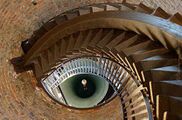Pattern recognition enhancement: Difference between revisions
>Oskykins No edit summary |
>Oskykins No edit summary |
||
| Line 5: | Line 5: | ||
This effect can become extremely intense. For example, every single leaf on a tree might look like many tiny green faces, scenery may look remarkably like people or objects, or clouds might appear to be easily recognizable as fantastical objects, all without any visual changes actually taking place. | This effect can become extremely intense. For example, every single leaf on a tree might look like many tiny green faces, scenery may look remarkably like people or objects, or clouds might appear to be easily recognizable as fantastical objects, all without any visual changes actually taking place. | ||
This is also combined with an increased interest and attraction to symmetrical geometric and organic patterns that often become permanently grounded | This is also combined with an increased interest and attraction to symmetrical geometric and organic patterns that often become permanently grounded with people often reporting to find a strange attraction to textures and patterns that they never would have thought twice about before. Some of these patterns include basic designs on wallpaper/clothing and on rugs such as oriental carpets. | ||
<gallery caption="" widths="300px" perrow="3"> | <gallery caption="" widths="300px" perrow="3"> | ||
Revision as of 19:59, 8 March 2014
This component can be defined as a person's ability to recognize significant imagery (usually faces) in almost any vague stimuli.
This innate ability which human beings possess in everyday life is referred to by the scientific literature as pareidolia and is very well documented. Common examples of this in day to day life include spotting faces in everyday objects and viewing clouds as fantastical objects.
This effect can become extremely intense. For example, every single leaf on a tree might look like many tiny green faces, scenery may look remarkably like people or objects, or clouds might appear to be easily recognizable as fantastical objects, all without any visual changes actually taking place.
This is also combined with an increased interest and attraction to symmetrical geometric and organic patterns that often become permanently grounded with people often reporting to find a strange attraction to textures and patterns that they never would have thought twice about before. Some of these patterns include basic designs on wallpaper/clothing and on rugs such as oriental carpets.
-
Face in a cloud.
-
Faces within trees and rocks.
Click here for full gallery.


